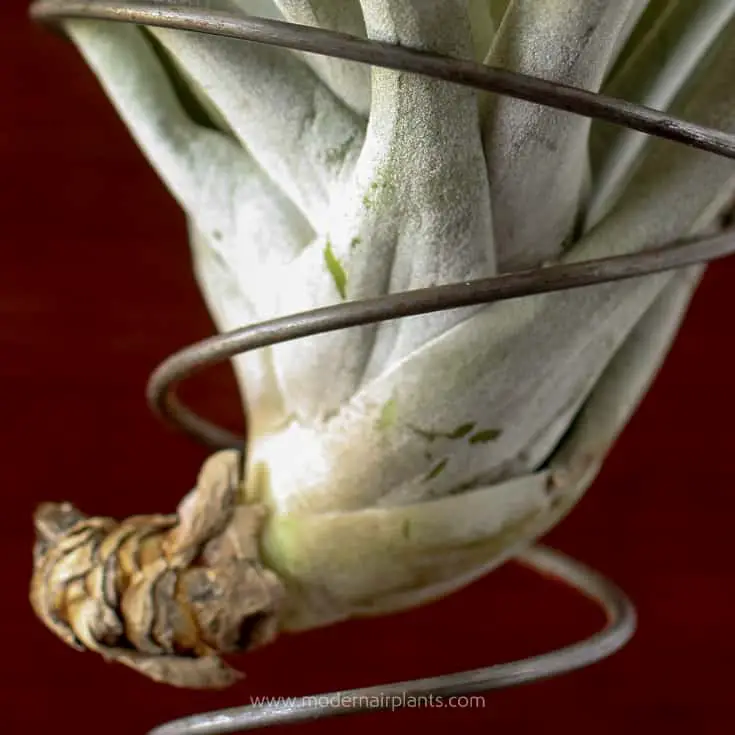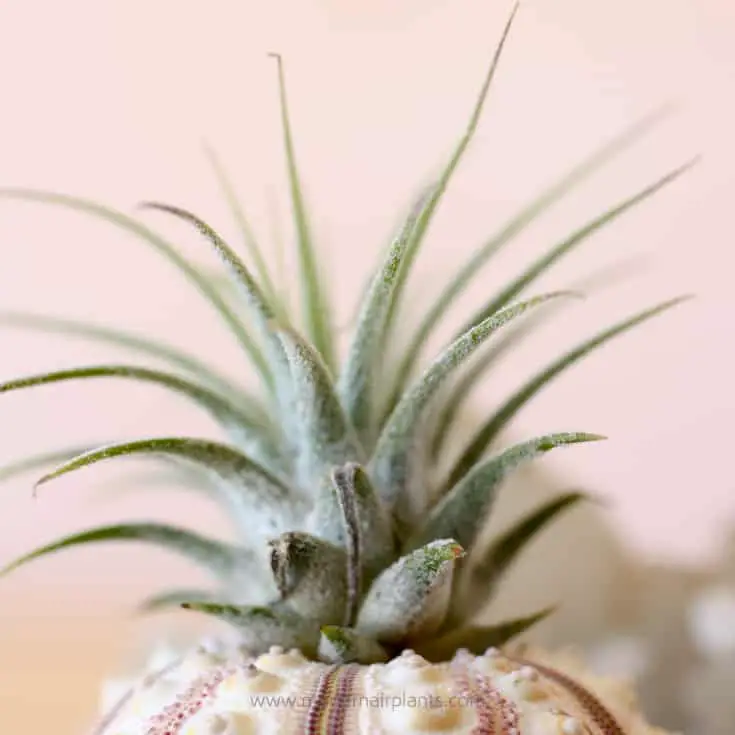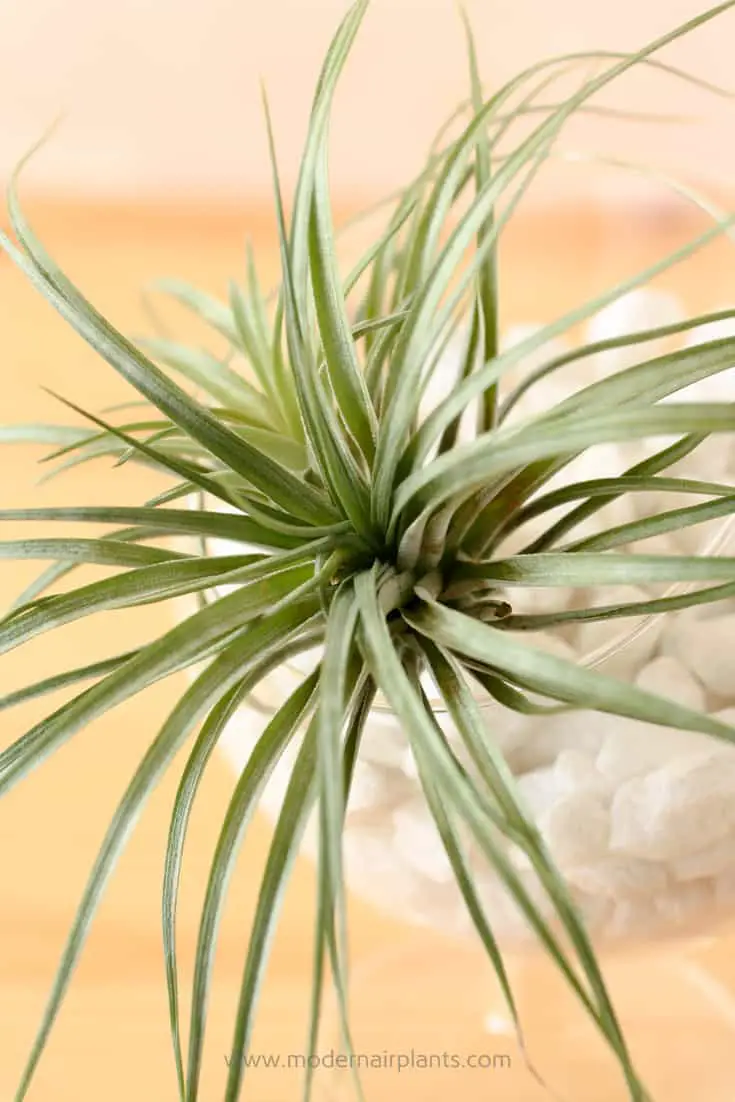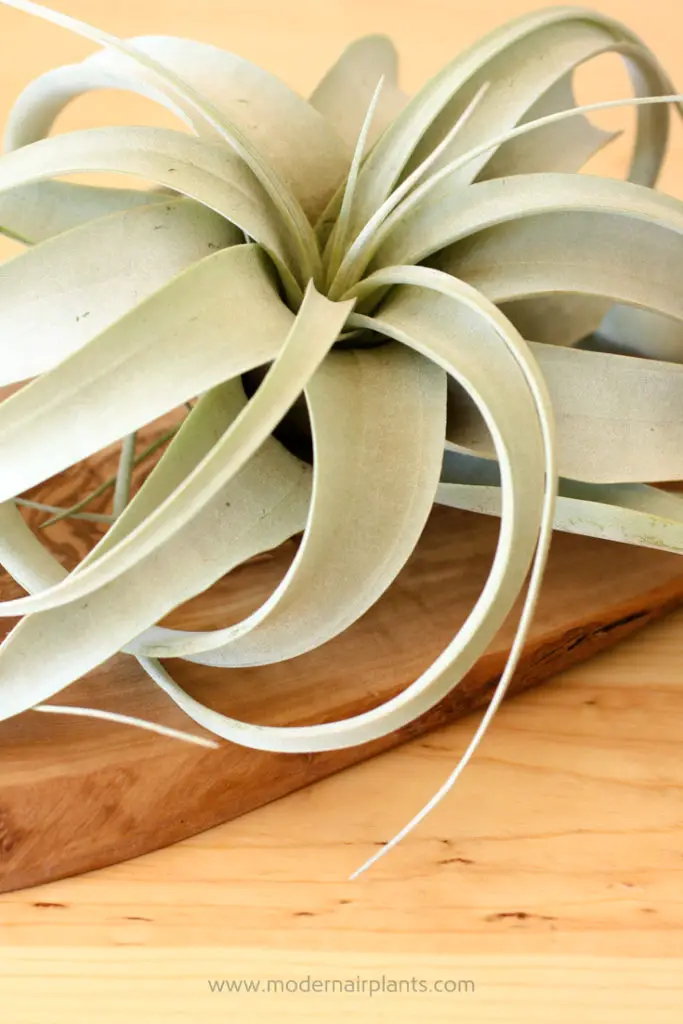What are air plants anyway?
Air plant is the common name for Tillandsia a genus within the Bromeliad family. Another member of the Bromeliad family that you are already familiar with is the pineapple. Within the Tillandsia genus are over 700 species. When we refer to air plants, we are really talking about Tillandsias.
A Quick Lesson on Plant Taxonomy
Plants are classified into a family. Families are then broken up into divisions based on similarities and differences. These divisions are called genuses. Within the genus are more subgroups called species. (There are more groups within the plant naming hierarchy, but we won’t worry about those.)
The family to which air plants are classified is as follows:
Family: Bromeliad>Genus: Tillandsia>Species: include the various types of Tillandsias
Air Plants and Epiphytes
The term epiphytes describes plants that live on other plants, or rocks, or whatever else they can latch onto for support, but are not parasitic–they do not take nutrients from the host plant. Epiphytes do not have typical root systems that burrow into soil to absorb nutrients.
Epiphyte is a description, not a classification. Although both air plants and orchids are epiphytes they belong to different families. Tillandsia belong to the bromeliad family, while orchids are part of the orchidaceae family. Ferns and mosses are other examples of plants that are also epiphytes that belong to other families.
The function of tillandsia roots is to anchor them to a host. They do not absorb any water or other nutrients through their roots. In fact, tillandsia roots can be cut off at the base of the plant without any harm to the plant. When you purchase a tillandsia their roots will have already been trimmed off. Over time the roots will begin to grow again. If you think the roots are a bit unsightly, trim them off.

The roots of this Tillandsia peach capitata have been trimmed off at the base.
Trichomes
Rather than roots, air plant leaves are covered with trichomes, tiny sponge-like cells that absorb water and nutrients for the plant. And that’s not all, trichomes perform another function for the plant: sun protection. Tillandsias from more sunny climates sport more trichomes, while those from shadier locations have fewer, less visible trichomes.
Xeric and Mesic
Tillandsias that come from harsher, dryer climates with more pronounced trichomes revealing a more silvery appearance with stiffer leaves are known as xeric. Tillandsia that originate from more tropical climates are known as mesic. These plants are less silvery and softer to the touch than xeric tillandsia. Their trichomes are less pronounced and may even be microscopic.

The powdery looking trichomes on this xeric Tillandsia ionantha are clearly visible.

On the other hand, the trichomes on this mesic air plant are not visible, but they are there.
The bottom line for you and me is that xeric tillandsia can handle more intense sun and are more drought tolerant, while mesic tillandsia don’t have the same high light requirements as do the xeric plants.
While it is useful to know which types of air plants you own, you can certainly grow both mesic and xeric varieties, no matter where you live. Also there are some air plants that don’t fall neatly into either category and are known as semi-mesic. Another tillandsia subgroup is called hydric. These plants live in or around water and do not thrive in a home environment and aren’t readily available.
Congratulations!
Now your’re a bit of a tillandsia sleuth. Just by looking at their leaves you can determine if they are from a humid or arid climate. You understand where and how they absorb water and nutrients and that while they may be epiphytes that doesn’t make them a family member to orchids and ferns, but rather to the pineapple!
Buy Air Plants
If you’re like most people, you want to get the most for your money. CLICK HERE, to find out where you can buy healthy air plants that, with proper care, you’ll enjoy for years to come!


